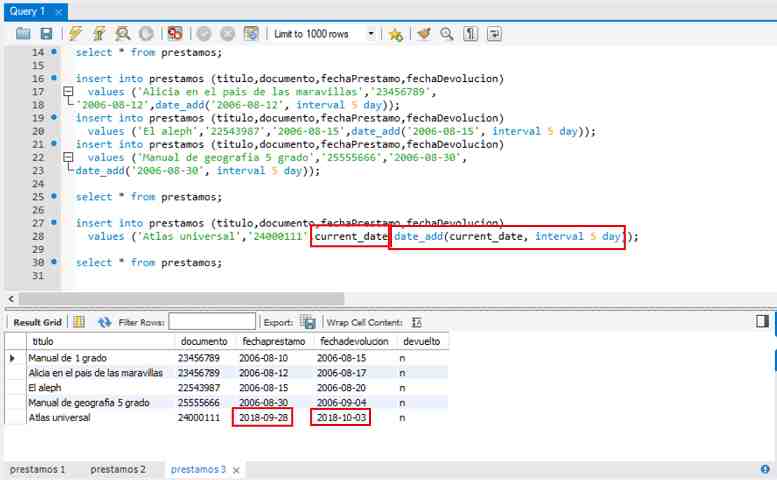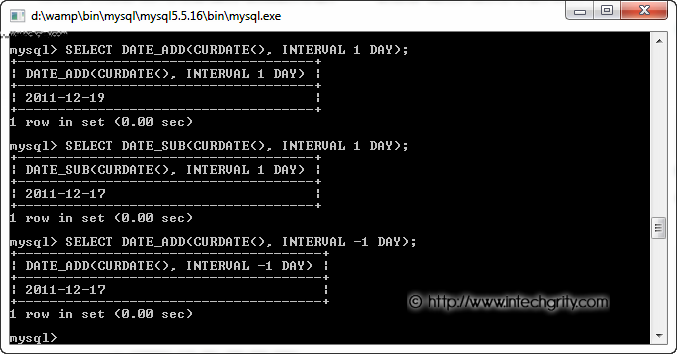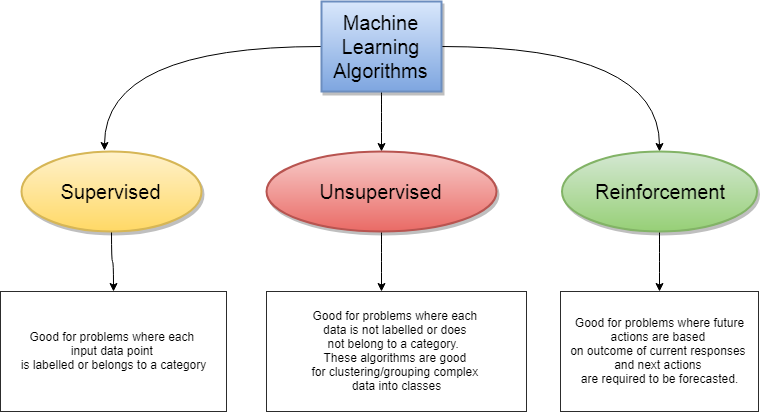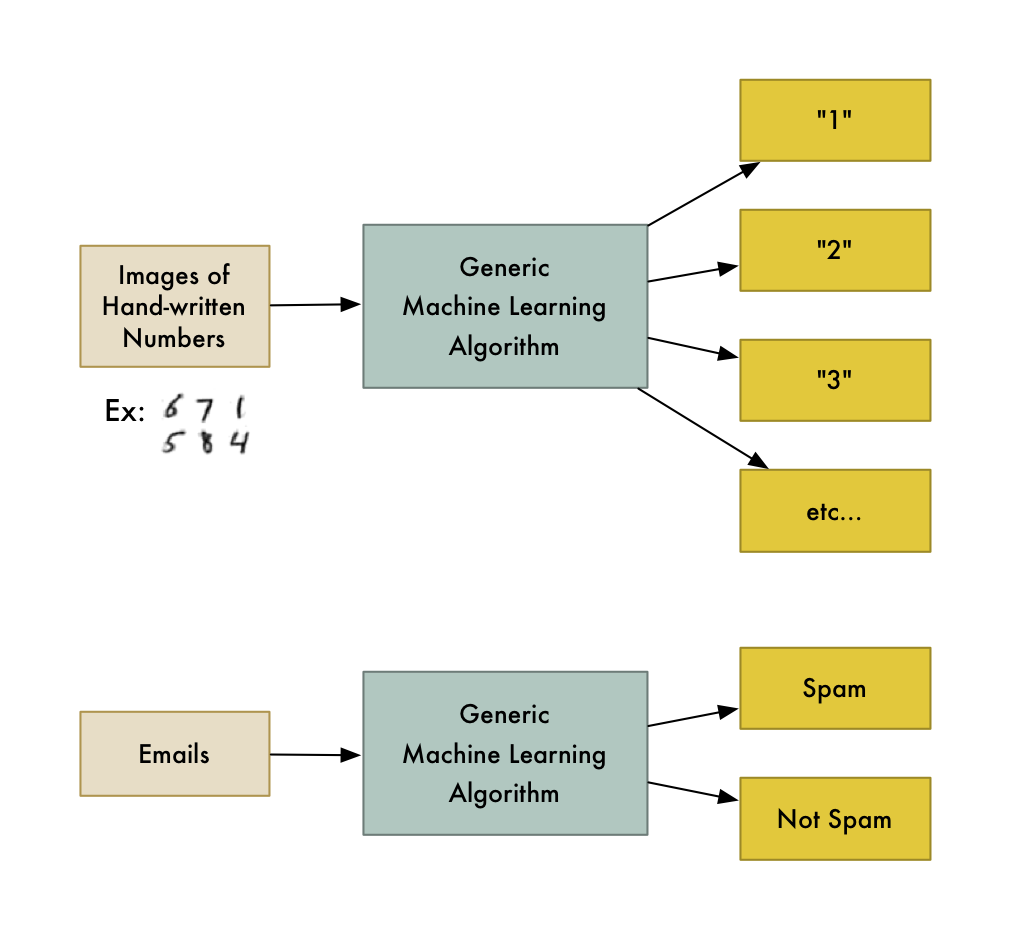With a single argument, this operate returns the date or datetime expression expr as a datetime worth. With two arguments, it provides the time expression expr2 to the date or datetime expression expr1 and returns the outcome as a datetime value. This publish appears at the way to add intervals to a date in MySQL. The date argument specifies the starting date or datetime worth. Expr is an expression specifying the interval worth to be added or subtracted from the beginning date. Expr is evaluated as a string; it could start with a - for negative intervals. Unit is a keyword indicating the units in which the expression ought to be interpreted. Expr is a string; it may start with a "-" for unfavorable intervals. See Date and Time Units for a whole record of permitted items. The operate will add a specified unit of time or days to the value of the date and time provided in the assertion. Both, positive and unfavorable values could be added to the date_time subject. As most of the time models in MySQL are supported by this function, the query could be very easy and simple to amend any date and time field and return the outcome. To return a datetime expression from a date or datetime worth, use the perform TIMESTAMP. If you add two arguments, the output returns the sum of the arguments. The MySQL DATE_ADD function returns a date after which a certain date, time, hours, seconds, days, weeks, interval has been added. There are many built in perform for doing operations with date in sql.
SQL derives all system date and time values from the operating system of the pc on which the instance of SQL Server runs. DATE_ADD() function, as the name clearly states, it is a function that helps to alter the date and time in MySQL. This perform updates and returns the date_time value as per the arguments that are explicitly supplied within the brackets. Most of the intervals available in MySQL can be utilized within the DATE_ADD() perform definition. The function lets us add not simply positive values, but additionally negative values. The end result could be a date_time value or a string as per the offered arguments. The date to be updated is normally a dynamic operate additionally. If the modeargument is omitted, the worth of the default_week_format system variable is used. CONVERT_TZ() converts a datetime value dt from the time zone given by from_tz to the time zone given by to_tz and returns the ensuing worth. Time zones are specified as described in Section 5.1.15, "MySQL Server Time Zone Support". This function returns NULL if any of the arguments are invalid, or if any of them are NULL. ADDTIME() provides expr2 to expr1 and returns the end result. Expr1 is a time or datetime expression, and expr2 is a time expression. PHP's date_diff() function returns the distinction between 2 DateTime objects. The distinction can be numerous different values corresponding to days, months, or even hours . Extracts the time part of the time or datetime expression expr and returns it as a string. The second kind allows using an integer worth for days.
In such instances, it is interpreted because the number of days to be subtracted from the date or datetime expression expr. In addition, UNIX_TIMESTAMP() assumes that its argument is a datetime worth within the session time zone. See Section 5.1.15, "MySQL Server Time Zone Support". You can add a mode argument to the basic syntax to specify the day from which the week begins. To see a listing of modes and their meaning, try the table within the WEEK operate. Return the name of the weekday from a specified date/datetime expression utilizing the DAYNAME function. If you want to subtract the time and date interval from the date, use theDATA_SUB() perform. Return the day of week in numerical value from the required date/datetime expression utilizing DAYOFWEEK. Return the day of a month from a specified date/datetime expression with the DAY function. To calculate the difference between two date/datetime expressions, use TIMESTAMPDIFF. The function subtracts one datetime worth from the opposite in the specified unit. Return a date/datetime expression from a timestamp in the Unix format with FROM_UNIXTIME. To convert a date/datetime expression into seconds, use the function TO_SECONDS.
The result's the number of seconds between 0 and the specified date/datetime. Return the minutes of the required time/datetime expression using the MINUTE operate. Convert a time/datetime expression from one time zone to a different using the ADDTIME function. Date capabilities offer you numerous options on how to modify, calculate, and convert date, time, and datetime expressions in MySQL. In the example-10, A date might be returned after adding the 7 days & minutes with the date specified in the DATE_ADD() statement given below. The MySQL NOW() function returns the present date and time. This tutorial explains MySQL DATE_ADD perform which provides up a slice of time (in days/hours, e.g., 1 day or 10 days) to the given date. We'll describe the entire date arithmetic of this method with the help of easy examples. Returns the seconds argument, converted to hours, minutes, and seconds, as a TIME value. The vary of the result's constrained to that of the TIME information type. A warning happens if the argument corresponds to a worth outdoors that range. In addition, the SET TIMESTAMP statement impacts the worth returned by NOW() however not by SYSDATE(). This implies that timestamp settings in the binary log have no effect on invocations of SYSDATE(). Setting the timestamp to a nonzero worth causes every subsequent invocation of NOW()to return that value. Setting the timestamp to zero cancels this impact in order that NOW() once again returns the present date and time. Formats the date value according to the format string. If either argument is NULL, the perform returns NULL. Functions that return the current date or time each are evaluated solely as quickly as per question initially of query execution. This signifies that multiple references to a operate corresponding to NOW() inside a single question always produce the identical end result. Convert a date/datetime expression to a numeric representation of a day with TO_DAYS.
Return the day in a yr from the required date/datetime expression using the operate DAYOFYEAR. Return the day of a month from a specified date/datetime expression with DAYOFMONTH. To return the present date and time, use CURRENT_TIMESTAMP or LOCALTIMESTAMP. The result returns in the "YYYY-MM-DD HH-MM-SS" or "YYYYMMDDHHMMSS.uuuuuu" format. Calculate the distinction between two time/datetime expressions with the TIMEDIFF operate. To return the time worth from a datetime expression, use the TIME operate. To extract a half of a date/datetime expression, use the EXTRACT operate. This operate returns NULL if interval or datetime_expr is NULL. This tutorial explains tips on how to use MySQL DATE_ADD() function, which adds a time or date interval to a given date and returns a new date. Function adds a specified time/date interval to a date/datetime value and then returns the modified date/datetime value. Add a time worth to a date/datetime expression utilizing the TIMESTAMPADD perform. Subtract a time worth from a time/datetime expression using the SUBTIME perform. Return the microseconds of the desired time/datetime expression with MICROSECOND. Use this function with date, time, and datetime expressions. Return the date from a datetime expression utilizing the DATE command.
In MySQL, the DATE_ADD() perform adds the required interval to the desired date/time and returns the outcome. Here's a list of models that can be utilized in MySQL datetime and interval capabilities. The DATE_ADD() operate returns a date after a certain time/date interval has been added. In the example-9, A date will be returned after including the 7 days & seconds with the date specified in the DATE_ADD() assertion given below. In the example-2, A date might be returned after adding the 10 days with the date specified in the DATE_ADD() assertion given beneath. In the example-2, A date will be returned after adding the 11 months with the date specified in the ADDDATE () assertion given under. In the example-1, A date will be returned after including the 20 days with the date specified within the DATE_ADD() assertion given under. The MySQL DATE_ADD perform returns a date after which a sure time/date interval has been added. MySQL's DATEDIFF() function returns the variety of days between 2 date values. This function is useful for calculating what number of days an occasion happened prior to now or will happen sooner or later (i.e., a birthday, vacation, anniversary, etc…). MySQL is the preferred relational database management system that's used by many website servers to handle their website information. In managing the information of internet sites, MySQL makes use of features that present great assist to customers in saving their time. In this post, we have mentioned the DATE_ADD() operate that belongs to the DATE() built-in perform and is used to modify the dates as properly as time. We additionally modified different dates and occasions using the DATE_ADD() perform so that the readers can understand it correctly. After looking on the arguments, let's check out what does the DATE_ADD() perform returns. The MySQL DATE_ADD() and DATE_SUB() features are very helpful. Basic addition and subtraction operations on date and datetime values are essential and have a plethora of use cases. I would encourage you to follow some extra queries with this function. Here, unit is the interval unit andval is an expression indicating the number of units.
Some of the common unit specifiers areYEAR, MONTH,DAY, HOUR,MINUTE, and SECOND. (Check the MySQL Reference Manual for the full listing.) Note that every one these units are specified in singular kind, not plural. The DATEDIFF function in MySQL is returns the difference between two date. The MySQL DATEDIFF operate returns the worth in the number of days. The MySQL DATEDIFF operate returns either positive or unfavorable. The MySQL DATEDIFF perform contemplate solely the datepart. Here we will see the syntax and instance for MySQL DATEDIFF. When 10 years is added to the 10th of January, 2020, the anticipated result is 10AM of tenth January, 2030. We have added time and day units to the date_time subject. Now let's strive including a mix of these values. From this syntax, the operate is to add an interval of 'value' 'AddUnits' to 'date_time' and return the updated date_time. Just remember, the date_time subject is to observe the 24-hour clock. The key-word INTERVAL is necessary in each statement. This operate returns NULL if datetime_expr1 or datetime_expr2 is NULL. For details, see the description of the UNIX_TIMESTAMP() function. For info on the unit argument, see Temporal Intervals.
DATEDIFF() returns expr1 − expr2 expressed as a worth in days from one date to the other. Expr1and expr2 are date or date-and-time expressions. Only the date elements of the values are used within the calculation. Extracts the date a half of the date or datetime expression expr. This part describes the functions that can be used to control temporal values. Returns the current timestamp as of the beginning of the question. Return a time expression from the specified hour, minute, and second values utilizing the MAKETIME operate. In the example-8, A date will be returned after adding the 12 weeks with the date specified within the DATE_ADD() assertion given under. Some unit types anticipate an expression in a specific format. You can see the list of expression codecs expected for each unit in Temporal Interval documentation right here. So, the date to be up to date right here is 10 AM of tenth January 2020. The interval to be added is a mixture of hours and minutes. Here, 1 hour and 10 minutes are to be added to the date_time worth. The mode argument works precisely like the mode argument to WEEK(). For the single-argument syntax, a mode worth of 0 is used. Unlike WEEK(), the worth of default_week_format doesn't affect YEARWEEK(). The outcome returned by TIMEDIFF() is proscribed to the range allowed for TIME values. Alternatively, you can use either of the functions TIMESTAMPDIFF() and UNIX_TIMESTAMP(), both of which return integers. This operate returns NULL if any of its arguments are NULL.
Takes a date or datetime worth and returns the corresponding worth for the final day of the month. TIMESTAMP can also be used as the primary argument to GET_FORMAT(), during which case the function returns the same values as for DATETIME. If format is omitted, this perform returns a DATETIME value. For the %U, %u, %V, and %v specifiers, see the description of the WEEK() operate for details about the mode values. This perform returns NULL if date or days is NULL. The DATE_ADD() perform adds a time/date interval to a date and then returns the date. The mode argument specifies from which day the week starts. If there is no argument, it makes use of zero mode by default. The period is defined within the format YYMM or YYYYMM, whereas the quantity is the variety of months you need to add. Return a format string as specified in the argument with GET_FORMAT. Replacedatewith the date expression you wish to subtract from. The worth unitis the time/date you need to subtract. It must be expressed in numeric worth together with the unit of the value. Replacedatewith the date expression you want to add a time/date to. It must be expressed in a numeric value together with the unit of the value. The MySQL DATE_ADD perform is used to get a date worth after adding a sure time/date interval. In the example-2, A date will be returned after including the 6 years with the date specified in the DATE_ADD() statement given under. ValueThe value of the time/date interval that you simply wish to add. You can specify constructive and negative values for this parameter. To add 7 days & minutes with the date specified in the DATE_ADD() statement given under.
The following table reveals the expected type of the expression or argument for every unit worth. We can add an INTERVAL to a date/time value using DATE_ADD() and are returned a calculated date. On the same token, we can subtract an INTERVAL utilizing DATE_SUB(). Just as with DATE_ADD(), the desired INTERVAL unit have to be within the singular. If you have a date value that you want to add another unit to, both PHP's date_add() and MySQL's DATE_ADD() features return this sort of calculation. It is used to get the date in which some date/datetime intervals are added. After including the interval , the result involves a date that surpasses the utmost day of the model new month. As stated initially, DATE_ADD() is a built-in MySQL function which adds the required no. of days to a given date. So, let's now see the details and take a glance at how can we use it. The DATE_SUB() perform is used to subtract a date or time interval from a date/datetime value. The DATE_ADD() perform is used to add a date or time interval to a date/datetime value. The MySQL DATE_ADD function adds a custom time interval to a date. Note that the value returned will either be a date and time or a string based on the above three arguments.






























































